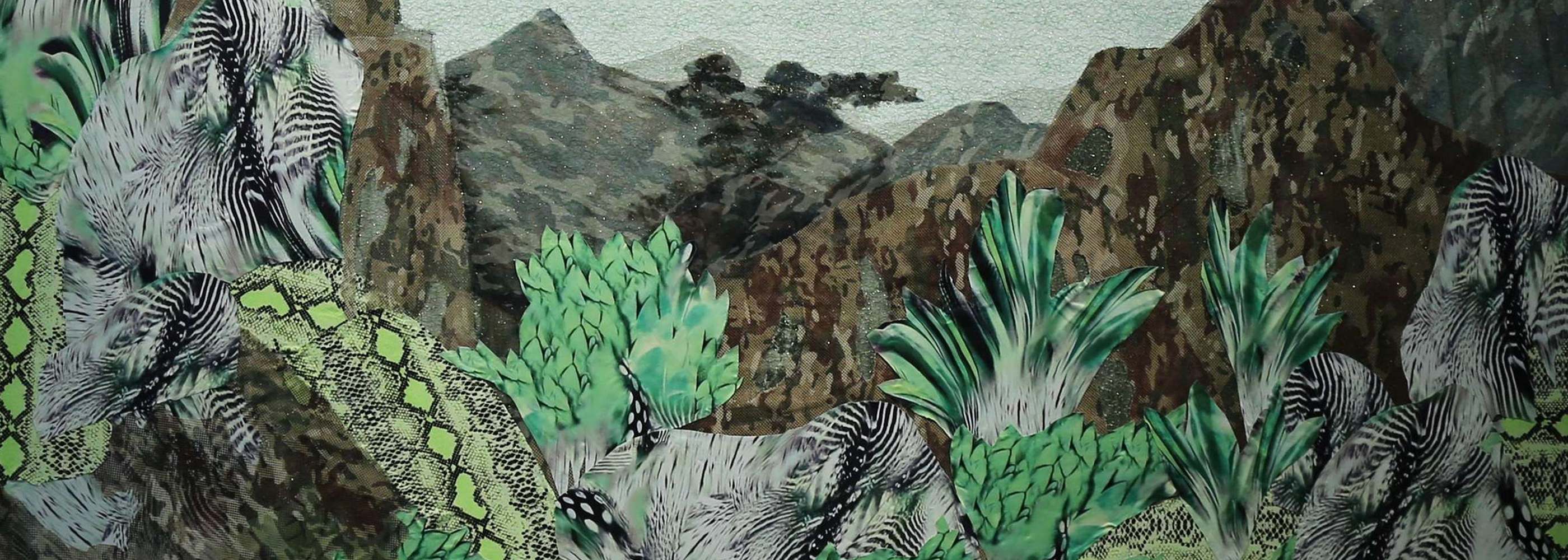

Li Xinmo:This work is a collage created by using fabrics with different patterns and textures. I used these fabrics to piece together a landscape painting, rewriting and replacing the traditional Chinese landscape painting. In the painting, I integrated the snake element from the installation work, with the snake's body winding and hiding among the rocks and plants.
As a symbol of ancient power, the snake also represents nature. The mountains and rivers in the background are collaged using camouflage fabric, symbolizing human beings. The camouflage fabric reminds people of ongoing war scenes. In my opinion, human history is an undoubtedly cruel history of wars, filled with plunder, killing, and possession.
Behind wars, there are often traces of patriarchal domination, as well as the mindset of opposition and control. These factors have also led to excessive plunder and persecution of nature by human beings. This landscape work, through symbols and metaphors, presents reflections on and considerations about human history.
Zhong Ting:In this work, Li Xinmo demonstrates her rebellion against "anthropocentrism." Images of animals, plants, human beings, and their cultures are integrated into nature to form an organic whole.
In the myth of the Mother Goddess, the Chaos God evolves all things in her own body. In the Taoist view of the universe, it is not difficult to perceive the "motherhood" of primordial chaos, for example, "An integrated being existed before the birth of Heaven and earth. How still! How void! Standing all by herself and never changing, she moves in and through all and is not wearied, worthy to be the mother of Heaven and earth." (Dao De Jing, Chapter 25) Through the reconstruction of traditional painting forms, the artist provides a perspective of "return."